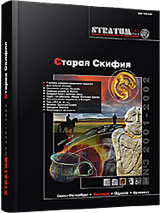Результаты минерало-петрографического анализа зернотерок из античных поселений V – начала III вв. до н.э. сельской округи Феодосии
The Results of the Mineral and Petrographical Analysis of the Cornmills from the Antique Settlements of the Hinterland of Theodosia in the V – Early III Centuries B.C.
Author(s): Alexander V. Gavrilov, Nikolai N. MakarovSubject(s): History, Archaeology, Ancient World
Published by: Издательский дом Stratum, Университет «Высшая антропологическая школа»
Summary/Abstract: The analysis determined that the diverse stone rocks from the various local deposits in the Crimean Mountains might have been used to produce the cornmills. These were trass, basalt, diorit, dacit, porphirit, tufa of volcanic origin, porous drive, limestones and sandstones of various consistency. The deposits of trass situated in the mountain mass of Kara Dag, were mined mainly. It is the former volcano 18 km westward from Theodosia. The cornmills made of trass were found almost on all the sites and cities of European Bosporus. It proves the fact that the stone mines in the Kara Dag and the workshops in Theodosia produced the cornmills spread in the antiquity.
Journal: Stratum plus. Археология и культурная антропология
- Issue Year: 2002
- Issue No: 3
- Page Range: 418-424
- Page Count: 7
- Language: Russian
- Content File-PDF

